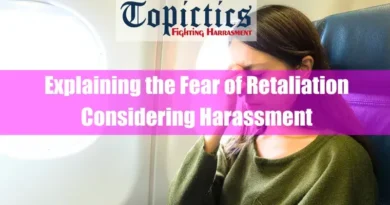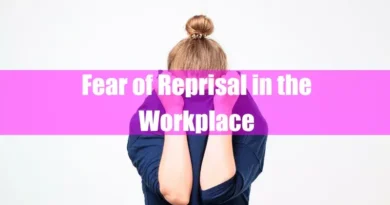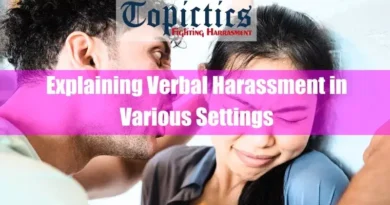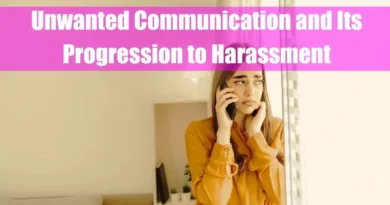Understanding Harassment and 16 Types
Takeaways
| Type of Harassment | Key Takeaways |
|---|---|
| Quid Pro Quo Harassment | Involves power dynamics where job benefits are exchanged for sexual favors; illegal under Title VII with legal recourse available for victims. |
| Workplace Harassment | Encompasses various behaviors that create a hostile work environment; employers must maintain anti-harassment policies and provide training. |
| Sexual Harassment | Includes unwelcome sexual conduct; protections expanded to cover sexual orientation and gender identity under Title VII. |
| Non-Sexual Harassment | Involves hostile behaviors unrelated to sex; can include bullying and discrimination based on protected characteristics, equally unacceptable under the law. |
| Hostile Work Environment | Defined by severe or pervasive harassment affecting employment; new guidelines consider digital communications and out-of-work behavior impacting the workplace. |
| Harassment in Relationships | Manifests as abuse within personal relationships; often overlaps with domestic violence, with expanded legal protections now in place. |
| Domestic Harassment | Involves abusive behavior in the home by a family member or partner; recent legal advancements have improved protections for victims. |
| Color and Racial Harassment | Targeted at individuals based on race, color, or ethnicity; reaffirmed as illegal under Title VII, with a strong emphasis on reporting such behavior. |
| LGBTQ+ Harassment | Harassment based on sexual orientation or gender identity; explicitly recognized as sex discrimination under the 2024 EEOC guidelines. |
| Harassing People with Disabilities | Involves offensive behavior towards individuals with disabilities; protected under the ADA with a focus on accommodation and protection from harassment. |
| Gender-Based Harassment | Directed at individuals based on gender; now includes protections for gender identity and expression under Title VII. |
| Religious Harassment | Targets individuals based on religion; employers must accommodate religious practices unless it causes undue hardship, as clarified by the EEOC. |
| Harassment in Educational Settings | Involves bullying, cyberbullying, and discrimination in schools; schools are legally required to address it under Title IX. |
| Political Harassment | Involves abuse based on political beliefs; can occur in various settings with legal protections varying by jurisdiction. |
| Public Harassment | Includes unwanted behavior in public spaces; jurisdictions are increasingly enacting laws to combat such harassment. |
| Cyberbullying | Occurs online through various digital platforms; recognized as a serious issue contributing to hostile environments, with legal responses evolving. |
Let’s discuss in detail:
Introduction
Harassment is a pervasive issue that impacts individuals across various aspects of life, including the workplace, schools, online environments, and personal relationships. In recent years, there has been a significant shift in understanding the different forms of harassment and the legal frameworks that protect individuals from such behavior.
The U.S. Equal Employment Opportunity Commission (EEOC) has provided updated guidelines to address the evolving harassment landscape, particularly in digital and virtual spaces. This article delves into 16 types of harassment, exploring their definitions, implications, and the current legal protections available.
Types of Harassment
1. Quid Pro Quo Harassment
Quid pro quo harassment occurs when an individual in a position of power offers or withholds job benefits, promotions, or other opportunities in exchange for sexual favors. This type of harassment is often seen in workplaces with imbalanced power dynamics. The EEOC’s 2024 guidelines reaffirm that such conduct is illegal under Title VII of the Civil Rights Act of 1964, and victims have the right to seek redress through legal channels.
Quid Pro Quo Harassment examples include:
- A manager suggests that an employee who agrees to go on a date will receive a favorable performance review.
- A professor implies that a student will pass a course only if they engage in a personal relationship.
2. Workplace Harassment
Workplace harassment encompasses a broad range of behaviors that create a hostile, intimidating, or abusive work environment. This can include verbal abuse, physical threats, and discriminatory actions based on race, gender, or other protected characteristics. The EEOC has emphasized the importance of employers maintaining robust anti-harassment policies and providing regular employee training to mitigate such behavior.
Workplace Harassment examples include:
- An employee is constantly belittled in meetings by a supervisor who makes fun of their accent.
- A worker is isolated and given undesirable tasks after refusing to participate in unethical behavior suggested by a coworker.

3. Sexual Harassment
Sexual harassment involves unwelcome sexual advances, requests for sexual favors, and other verbal or physical conduct of a sexual nature. This form of harassment can occur in any environment but is most commonly reported in the workplace and educational settings. The recent EEOC guidelines highlight the expanded protections under Title VII, which now explicitly include harassment based on sexual orientation and gender identity.
Sexual Harassment examples include:
- A senior employee repeatedly sends suggestive texts to a junior colleague despite being asked to stop.
- During a business trip, a manager makes inappropriate comments about an employee’s appearance and pressures them to spend time together after work hours.
4. Non-Sexual Harassment
Non-sexual harassment refers to any unwelcome behavior that is hostile, intimidating, or abusive but is not sexual in nature. This includes bullying, verbal abuse, and harassment based on characteristics such as race, religion, or disability. The EEOC’s updated guidance emphasizes that non-sexual harassment is equally unacceptable and can create a hostile work or learning environment.
Non-Sexual Harassment examples include:
- A coworker is regularly shouted at and demeaned in front of others for minor mistakes unrelated to their performance.
- Employees are frequently mocked and excluded from team activities because of their age.
5. Hostile Work Environment
A hostile work environment is created when harassment or discriminatory behavior is so severe or pervasive that it alters the conditions of employment and creates an abusive working environment. The EEOC’s new guidelines provide a detailed framework for determining when behavior crosses the line into creating a hostile work environment, including considering digital communications and out-of-work conduct that impacts the workplace.
Hostile Work Environment examples include:
- A Black employee faces constant racial slurs from colleagues, making it difficult for them to feel safe and valued at work.
- A female employee is subjected to daily sexist jokes and comments that create a toxic and demoralizing workplace atmosphere.
6. Harassment in Relationships
Harassment in relationships can manifest as emotional, psychological, or physical abuse between partners. This type of harassment is often categorized under domestic violence but can also include stalking, intimidation, and other forms of control. Legal protections for victims have expanded recently, with many states implementing stricter laws and support services.
Harassment in Relationships examples include:
- One partner constantly monitors and controls the other’s phone, social media, and personal interactions, threatening violence if they don’t comply.
- A partner consistently undermines the other’s self-esteem through insults and manipulative behavior to maintain control over the relationship.

7. Domestic Harassment
Domestic harassment involves abusive behavior within the home, typically by a family member or intimate partner. This can include physical violence, emotional abuse, and controlling behaviors. The legal landscape for domestic harassment has evolved, with more comprehensive protections and resources available for victims.
Domestic Harassment examples include:
- A spouse routinely humiliates their partner in front of their children, using verbal abuse and threats of physical violence.
- One family member repeatedly denies another access to financial resources, leaving them dependent and unable to leave the abusive environment.
8. Color and Racial Harassment
Racial harassment includes offensive or intimidating behavior directed at someone based on their race, color, or ethnicity. This can occur in the workplace, schools, and public spaces. The EEOC’s guidelines reaffirm that racial harassment is prohibited under Title VII, and victims are encouraged to report such behavior.
Color and Racial Harassment examples include:
- A coworker frequently makes derogatory jokes about a colleague’s dark skin tone, creating an uncomfortable work environment.
- A student is repeatedly called racial slurs and subjected to offensive gestures because of their ethnic background.
9. LGBTQ+ Harassment
LGBTQ+ harassment involves discrimination or abusive behavior directed at individuals based on their sexual orientation or gender identity. The EEOC’s 2024 guidelines have expanded protections to explicitly include LGBTQ+ individuals, recognizing that harassment based on sexual orientation and gender identity is a form of sex discrimination.
LGBTQ+ Harassment examples include:
- A transgender employee is deliberately referred to by the wrong name and pronouns by coworkers despite clear communication of their preferences.
- A gay couple is harassed by neighbors who leave threatening notes and graffiti on their property.

10. Harassing People with Disabilities
Harassment of individuals with disabilities can include offensive remarks, exclusionary practices, and other discriminatory behaviors. The Americans with Disabilities Act (ADA) provides legal protections for individuals with disabilities, and the EEOC’s guidelines highlight the importance of accommodating and protecting these individuals from harassment.
Harassing People with Disabilities, examples include:
- An employee who uses a wheelchair is repeatedly mocked by coworkers who make jokes about their mobility.
- A student with a learning disability is intentionally excluded from group activities and assignments by peers who see them as a burden.
11. Gender-Based Harassment
Gender-based harassment involves discriminatory or hostile behavior directed at someone based on their gender. This can include sexist remarks, exclusion from opportunities, and other forms of bias. The recent EEOC updates include gender identity and expression under the protections against gender-based harassment.
Gender-Based Harassment examples include:
- A female engineer is constantly interrupted and dismissed during team meetings, with male colleagues often taking credit for her ideas.
- A male nurse is ridiculed by coworkers who make derogatory comments about his ” unmanly choice of profession.”
12. Religious Harassment
Religious harassment occurs when an individual is targeted because of their religious beliefs or practices. This can include derogatory remarks, coercion to engage in certain religious activities, or exclusion based on religion. The EEOC’s guidelines clarify that religious harassment is illegal and that employers must accommodate religious practices unless it cause undue hardship.
Religious Harassment examples include:
- An employee is pressured to participate in prayers and religious ceremonies at work despite their different beliefs.
- A student is bullied and ostracized at school for wearing religious attire, such as a hijab or yarmulke.

13. Harassment in Educational Settings
Harassment in educational settings can affect students, teachers, and staff and includes bullying, cyberbullying, and discriminatory behaviors. Schools must take immediate and effective action to prevent and address harassment under Title IX of the Education Amendments of 1972.
Harassment in Educational Settings examples include:
- A high school student is bullied online and in person by classmates who spread rumors about their sexuality.
- A college professor consistently makes demeaning comments about a student’s nationality, affecting their academic performance.

14. Political Harassment
Political harassment involves intimidating or abusive behavior directed at someone because of their political beliefs or affiliations. This type of harassment can occur in the workplace, online, and public spaces. It can include threats, doxxing, and other forms of intimidation.
Political Harassment examples include:
- After expressing support for a political candidate, an employee faces hostile behavior from colleagues, including being excluded from meetings.
- A person is targeted with threats and doxxing online after publicly sharing their political opinions on social media.
15. Public Harassment
Public harassment, or street harassment, involves unwelcome comments, gestures, or actions directed at individuals in public spaces. This can include catcalling, stalking, and other forms of intimidation. Many jurisdictions have begun to implement laws and policies to combat public harassment.
Public Harassment examples include:
- A woman is followed and catcalled while walking home, making her feel unsafe in public spaces.
- A man is physically blocked from entering a store by a group who hurls insults at him based on his perceived political views.
16. Cyberbullying
Cyberbullying is a form of harassment that occurs online, often through social media, email, or other digital platforms. It includes threats, doxxing, and spreading false information. The EEOC acknowledges the impact of online harassment, including behaviors that can contribute to a hostile environment in both personal and professional settings. However, the term ‘cyberbullying’ is more commonly addressed in educational contexts.
Cyberbullying examples include:
- A teenager is relentlessly harassed on social media, with anonymous users spreading false rumors and sharing altered photos.
- An employee’s personal information is shared online without consent, leading to a barrage of abusive messages and threats.
Coping with Harassment and Its Types
Dealing with harassment can be an overwhelming and distressing experience. However, understanding the resources available and taking strategic steps can help victims regain control and ensure their safety. Here’s a detailed guide on coping with various types of harassment:
1. Recognize the Signs of Harassment
The first step in coping with harassment is recognizing that it is happening. Harassment can be subtle or overt, and it’s important to acknowledge behaviors that make you uncomfortable or unsafe. Common signs include persistent unwanted contact, derogatory remarks, exclusionary tactics, and intimidation or threats.
2. Document Everything
Documenting incidents of harassment is crucial. Keep a detailed record of what happened, when it happened, who was involved, and any witnesses present. This documentation will be invaluable if you report the harassment or take legal action. Save emails, text messages, or any digital communications that may serve as evidence.
3. Seek Support
Do not face harassment alone. Contact trusted friends, family, or colleagues who can provide emotional support and practical advice. For workplace harassment, consider speaking to a human resources representative or a union representative if applicable. Approach a trusted teacher, counselor, or school administrator in educational settings.
4. Understand Your Rights
Knowing your legal rights is essential when dealing with harassment. Laws vary depending on the type of harassment and jurisdiction. Still, you have the right to a harassment-free environment in many cases. For workplace harassment, Title VII of the Civil Rights Act of 1964 offers protections against discrimination and harassment based on race, color, religion, sex, and national origin. The Americans with Disabilities Act (ADA) and Title IX provide similar protections for individuals with disabilities and students.
5. Utilize Available Resources
There are numerous resources available to individuals experiencing harassment. Organizations like the Equal Employment Opportunity Commission (EEOC), the American Civil Liberties Union (ACLU), and local advocacy groups can offer guidance and support. Many workplaces and educational institutions also have specific policies and resources for addressing harassment. Familiarize yourself with these resources and how to access them.
6. Report the Harassment
Reporting harassment is a critical step in addressing it. Depending on the type of harassment, you may report it to your employer, school administration, or law enforcement. When reporting, provide your gathered documentation and be clear about your experiences. If the harassment occurs online, platforms often have reporting tools that allow you to flag abusive content and request action.
7. Consider Legal Action
If the harassment persists or if the situation is particularly severe, legal action may be necessary. Consulting with an attorney specializing in harassment or discrimination cases can help you understand your options. Legal remedies may include filing a lawsuit or seeking protection orders, depending on the nature of the harassment.
8. Implement Personal Safety Measures
For severe or threatening harassment, personal safety must be a priority. This might include changing your daily routine, increasing security measures at home, or even relocating temporarily if the threat level is high. For online harassment, consider adjusting privacy settings on social media, using two-factor authentication, and avoiding interactions with the harasser.
9. Engage in Self-Care
Harassment can take a significant toll on mental and emotional well-being. Engaging in self-care practices is crucial. This may include talking to a therapist or counselor, participating in support groups, practicing mindfulness or relaxation techniques, and ensuring you care for your physical health. Self-care is not just about relaxation; it’s about maintaining your overall well-being amidst challenging circumstances.
10. Educate Yourself and Others
Education is a powerful tool in coping with harassment. Understanding the dynamics of harassment and how it affects victims can empower you to take action. Educating others in your community or workplace about harassment can help create a supportive environment and prevent future incidents. Consider participating in or organizing workshops, discussions, and training sessions focused on harassment awareness and prevention.
11. Work Towards Resolution
Mediation or conflict resolution may be possible, especially in less severe harassment cases. This involves a neutral third party who helps the victim and the harasser come to an understanding and resolve the issue. However, this approach should be cautiously approached, particularly if the harassment has caused significant harm or a power imbalance between the parties involved.
12. Stay Informed
Harassment laws and policies are constantly evolving, particularly in response to societal changes and new forms of harassment, such as cyberbullying. Staying informed about these changes is crucial for both prevention and coping. Follow updates from trusted sources like the EEOC, legal news outlets, and advocacy organizations to keep abreast of new developments.
13. Empowerment Through Action
Finally, one of the most empowering steps in coping with harassment is taking action for yourself and others experiencing similar situations. This can involve advocating for stronger anti-harassment policies, participating in campaigns, or volunteering with organizations that support victims of harassment. Taking action can provide a sense of control and purpose, transforming a negative experience into a force for positive change.
Coping with harassment is a multifaceted process that involves understanding your rights, seeking support, and taking strategic steps to address the situation. While it can be a daunting experience, knowing the resources and legal protections available can help you navigate this challenging issue. Through documentation, reporting, self-care, and empowerment, individuals can protect themselves and work towards creating a safer, more respectful environment for all.
Conclusion
Harassment, in its many forms, is a significant issue affecting individuals across various spheres of life. Understanding the different types of harassment and the legal protections available is crucial in combating this pervasive problem. As societal awareness grows and legal frameworks evolve, there is hope for creating safer, more respectful environments for everyone.
FAQ
What is sexual harassment in professional environments?
Sexual harassment in professional environments refers to unwelcome sexual advances, comments, or behaviors that create a hostile or offensive work setting. This conduct undermines an individual’s dignity and disrupts professional performance, prompting organizations to enforce strict policies to protect employee well-being.
What is workplace harassment and its impact on employee well-being?
Workplace harassment involves repeated and unwelcome behavior—ranging from verbal abuse to discriminatory actions—creating an intimidating or oppressive workplace atmosphere. This persistent mistreatment significantly diminishes employee morale and productivity while often leading to long-term psychological distress.
What is cyber harassment in online communities?
Cyber harassment in online communities is the targeted use of digital platforms to send threatening, demeaning, or harmful messages intended to intimidate or isolate individuals. This form of abuse leverages the anonymity of the internet to inflict psychological harm and disrupt social interactions in virtual spaces.
What is racial harassment in diverse work settings?
Racial harassment in diverse work settings consists of discriminatory remarks or actions based on an individual’s race or ethnicity, which contribute to a hostile and unwelcoming environment. Such behavior violates principles of equality and respect and undermines team cohesion and individual confidence.
What is verbal harassment in interpersonal interactions?
Verbal harassment involves the use of insulting, demeaning, or threatening language aimed at belittling an individual, often as part of a broader pattern of abuse. This behavior can severely impact a person’s emotional health, leading to increased stress and diminished self-esteem.
What is psychological harassment and its long-term effects?
Psychological harassment is characterized by persistent behaviors such as manipulation, intimidation, or repeated criticism that inflict emotional and mental distress over time. Its long-term effects can include anxiety, depression, and a pervasive sense of powerlessness, often necessitating professional recovery support.
What is stalking harassment and its behavioral patterns?
Stalking harassment entails repeated and unwanted attention or surveillance that instills fear and anxiety in the target, often involving persistent following or intrusive communications. This behavior disrupts the victim’s sense of security and personal freedom, causing significant emotional turmoil.
What is bullying harassment in academic and workplace settings?
Bullying harassment in academic and workplace settings refers to sustained, aggressive behavior intended to intimidate or harm an individual through verbal, social, or physical means. Such actions create an environment of fear and isolation, significantly affecting the target’s performance and overall well-being.
What is gaslighting harassment and its psychological implications?
Gaslighting harassment is a form of psychological abuse where the perpetrator manipulates information to make the victim doubt their memory, perceptions, or sanity. This insidious tactic erodes self-confidence and mental stability, often leaving lasting effects on the victim’s emotional health.
What is quid pro quo harassment in professional relationships?
Quid pro quo harassment occurs when a person in authority demands sexual favors or other personal benefits in exchange for professional advancement or to avoid negative consequences. This coercive practice exploits power imbalances, creating a work environment where genuine consent is compromised.
What is hostile work environment harassment and its indicators?
Hostile work environment harassment is defined as pervasive or severe conduct that creates an intimidating, oppressive, or abusive workplace. Indicators include frequent derogatory remarks, discriminatory practices, or other behaviors that collectively undermine an employee’s ability to work comfortably and safely.
What is discriminatory harassment based on identity factors?
Discriminatory harassment based on identity factors involves targeting an individual with offensive or demeaning behavior because of inherent traits such as race, gender, religion, or sexual orientation. This targeted mistreatment reinforces negative stereotypes and creates an exclusionary environment that hampers diversity and inclusion efforts.
What is mobbing harassment in organizational contexts?
Mobbing harassment in organizational contexts refers to the collective bullying of an individual by a group of colleagues, resulting in social isolation and professional marginalization. This coordinated behavior damages the victim’s reputation and creates a toxic workplace culture that can have widespread detrimental effects.
What is doxxing harassment in digital spaces?
Doxxing harassment involves the unauthorized release of personal, identifying information online with the intent to intimidate or facilitate further abuse. This breach of privacy exposes individuals to significant risks, including targeted harassment and potential real-world harm, while eroding trust in online communities.
What is microaggression harassment and its subtle effects?
Microaggression harassment consists of subtle, often unintentional, comments or actions that convey derogatory or negative messages about a person’s identity. Although each instance might seem minor, the cumulative effect can lead to significant emotional distress and reinforce broader patterns of discrimination over time.









